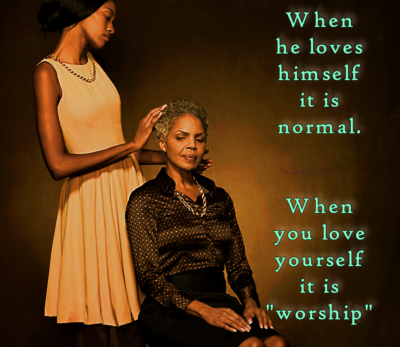In a world full of contradictions, there is one fear that rarely gets named, but is woven into the seams of our cultures, systems, and stories: gyno

from Sora
In a world full of contradictions, there is one fear that rarely gets named, but is woven into the seams of our cultures, systems, and stories: gynophobia.
From the Greek gyno- (woman) and -phobia (fear), gynophobia describes more than just a fear of women. It describes a learned aversion—an embedded resistance to female power, female autonomy, and the very presence of women who live unapologetically.
But this isn’t just a word.
It’s an experience.
It’s a shadow.
It’s the echo that trails behind a girl being called “too emotional,” a woman branded “too ambitious,” or “too difficult” just for telling the truth.
It’s the cultural reflex that calls a woman’s self-assurance “narcissism” but labels a man’s ego as “leadership.”
🕰️ Where Does This Fear Come From? And Who Does It Serve?
Gynophobia isn’t new.
It predates many terms we now understand as central to justice work. In fact, the earliest known use of gynophobia was recorded in 1886 by Oliver Wendell Holmes. By contrast, homophobia was coined much later, in 1971 by psychologist George Weinberg.
This doesn’t minimize the brutality of homophobia, especially during the AIDS crisis—a time many of us lived through, fought through, grieved through.
But the unfortunate truth remains:
There is more than one type of hate in this world.
And many women, especially lesbians, still live at the intersection of gynophobia and homophobia.
I’ve worked with Survivors who have experienced:
-
Corrective sexual violence
-
Domestic abuse dismissed as mutual conflict
-
Being coerced into silence or unwanted dating
-
Mockery and rejection for refusing male approval
👁️ How Gynophobia Hides in Plain Sight
Gynophobia isn’t always overt.
Sometimes it’s loud.
But most often, it hides in everyday conversations, jokes, comment sections, and laws.
-
“Does that biological woman really look like a woman?”
-
“If she can be considered a woman, then anyone can.”
-
“She’s just bitter.”
-
“She’s a man.”
-
“She hates men.”
-
“She’ll die alone with cats.”
-
“No one would want to rape her anyway.”
Yes, these are real things said—even by women—when another woman dares to speak about safety, about boundaries, about her right to exist without being groomed, harmed, or degraded.
And here’s the truth:
🕊️ A girl simply asserting her rights can be painted as a villain.
🕊️ A woman calling for boundaries can be called bitter.
🕊️ A mother seeking protection can be told she’s hateful.
🕊️ A lesbian naming her own truth can be met with violence cloaked in justice language.
🌊 Gynophobia Is a System, Not Just a Feeling
This isn’t about personal discomfort with women—it’s about systemic control.
It is the legacy of myths that cast powerful women as monsters or seductresses.
It’s the doctrine that teaches girls that their bodies are public property.
It’s the tradition of naming women “crazy” for knowing too much or speaking too clearly.
Gynophobia is why women are scrutinized for what they wear, how they lead, what they say, and who they say it to.
It is why boundaries are treated like betrayal when set by women.
And it is why even now, in this modern age, a woman fighting for safety may be accused of “hate”—simply because she knows what danger looks like.
🕯️ To the Ones Who Know This Truth in Their Bones
To the women who see this, live this, fight this—
You are not imagining things.
You are not alone.
You are not weak for feeling weary.
You are part of a long line of women who have survived the shadow, who have spoken their truth even when it was costly.
You are not born to be palatable.
You were born to be whole.
To be safe.
To be free.
And the systems that fear you?
They only confirm the power they tried—but failed—to erase.
Gynophobia in Literature: Stories That Speak Truth
Stories are the mirrors of society. They reveal what we fear, what we value, and who we dare to love or hate. Black women writers, in particular, have been bold enough to hold up these mirrors, reflecting truths that society would rather leave hidden. They have challenged the silence and spoken the unspeakable.
Here are some powerful works by Black authors who have courageously explored themes related to gynophobia, misogyny, and the complex intersection of race and gender:
1. For Colored Girls Who Have Considered Suicide / When the Rainbow Is Enuf by Ntozake Shange
This choreopoem is a lyrical tapestry of voices, weaving together the experiences of seven African American women. It unapologetically confronts the violence, heartbreak, and systemic misogyny faced by Black women, making visible the ways gynophobia shapes their lives.
2. Their Eyes Were Watching God by Zora Neale Hurston
Janie Crawford’s journey toward self-discovery and empowerment is a testament to the resilience of Black womanhood. Through Janie’s relationships and the societal constraints she faces, Hurston masterfully illustrates how gynophobia is woven into cultural norms and expectations.
3. Contending Forces by Pauline Hopkins
This groundbreaking novel delves into the experiences of Sappho Clark, a Black woman navigating a world marked by racial and gender prejudices. Hopkins exposes the intersectional oppression that Black women have historically faced, revealing the deeply rooted fears that society holds against them.
4. Home Girls: A Black Feminist Anthology edited by Barbara Smith
A collection of essays, stories, and poems by Black women writers, this anthology explores the multifaceted experiences of Black womanhood, including the impact of sexism and societal misogyny. It provides a platform for voices that challenge the silence imposed by gynophobia.
5. Black Sexual Politics by Patricia Hill Collins
A scholarly exploration of the intersections of race, gender, and sexuality, this work provides a critical lens on the systemic nature of misogyny within Black communities and American society at large. It unpacks the complexities of gendered fear and prejudice, revealing the historical underpinnings of gynophobia.
Breaking the Silence: Why We Must Name It to Change It
Why speak about gynophobia? Why confront this fear that has been normalized, institutionalized, and even romanticized?
Because silence is compliance.
Because what we do not name, we cannot change.
Understanding gynophobia is not about pointing fingers or creating division. It’s about unveiling the invisible forces that dictate whose voices matter, whose stories are told, and whose lives are valued. It’s about challenging the myths that shape our understanding of femininity and masculinity.
It’s about freedom—for all of us.
A Call to Reflect, Learn, and Unlearn
As we celebrate Black History Month and look forward to Women’s History Month, let us honor the voices of Black women who have paved the way with their words, their courage, and their vision. Let us read their stories, learn from their wisdom, and be inspired to challenge the narratives that no longer serve us.
Let us recognize gynophobia not just as a fear but as a societal construct that limits us all. Let us name it, question it, and dismantle it—together.
And most importantly, let us imagine a world where loving oneself is not an act of defiance, but a declaration of humanity.
Because when he loves himself, it’s normal. When you love yourself, it’s revolution.
Further Reading & Reflection
- For Colored Girls Who Have Considered Suicide / When the Rainbow Is Enuf by Ntozake Shange
- Their Eyes Were Watching God by Zora Neale Hurston
- Contending Forces by Pauline Hopkins
- Home Girls: A Black Feminist Anthology edited by Barbara Smith
- Black Sexual Politics by Patricia Hill Collins
Take a moment to immerse yourself in these stories. Reflect on the narratives that shape our world. And let us continue the conversation—one word, one story, one voice at a time.
FYI, this is a good reason not to collude with others when they try to erase teaching history. All history lessons can serve us to be better people today.
The Resistance of Celia: The Enslaved Black Girl Who Fought Back
